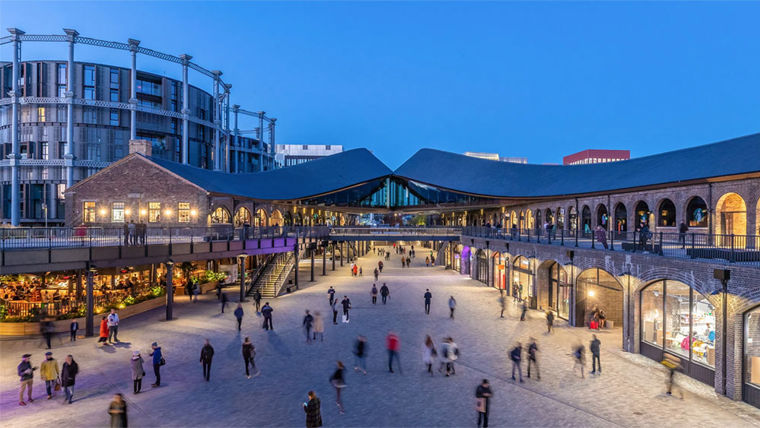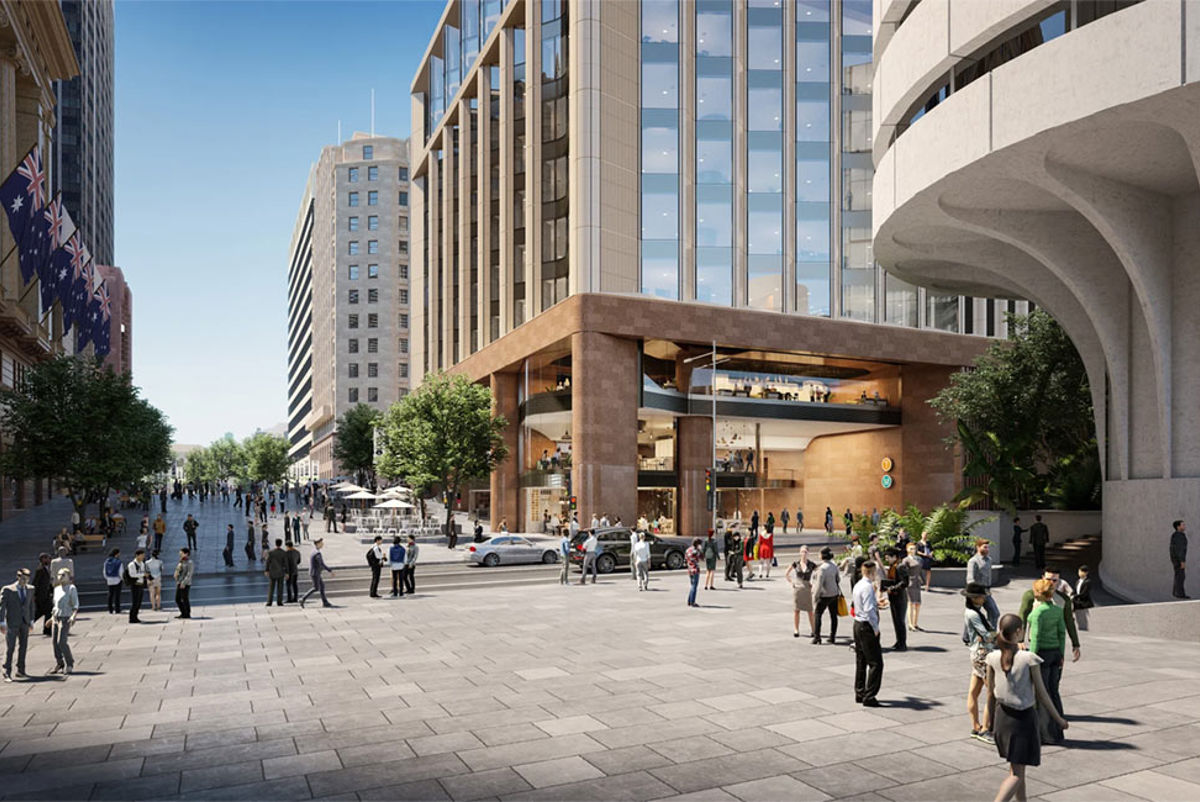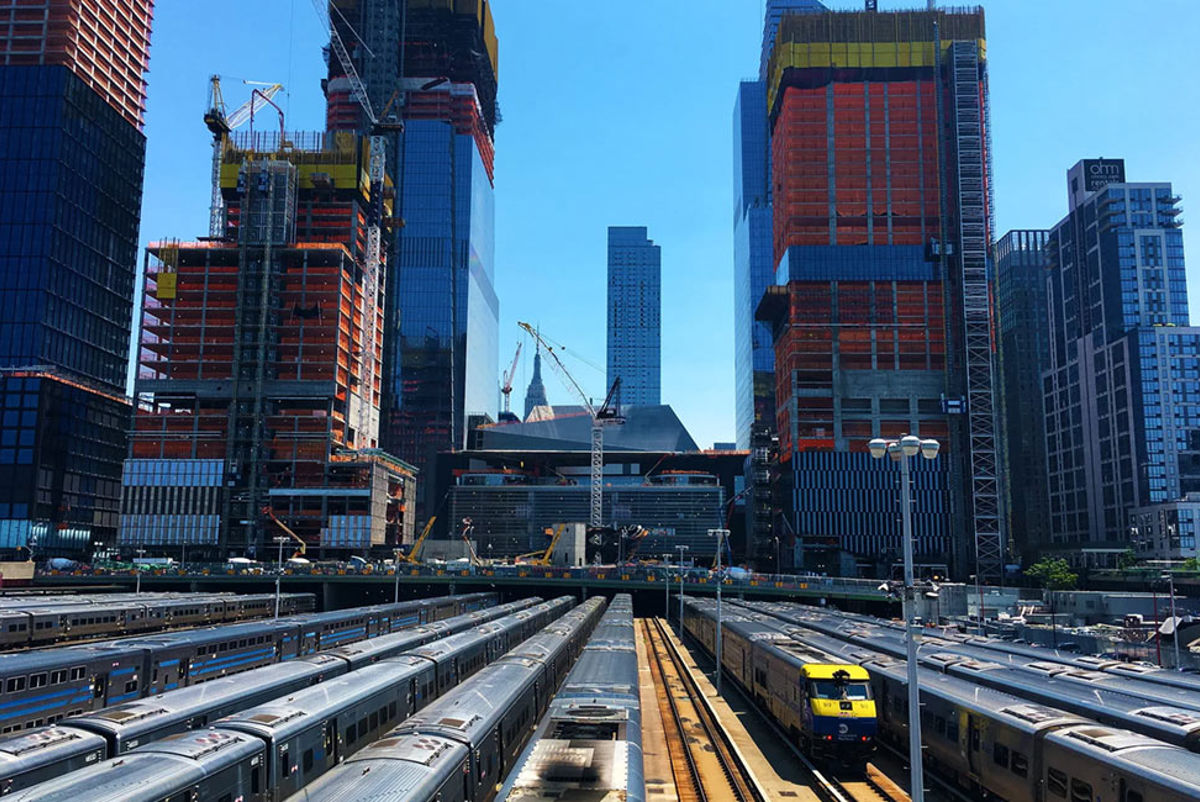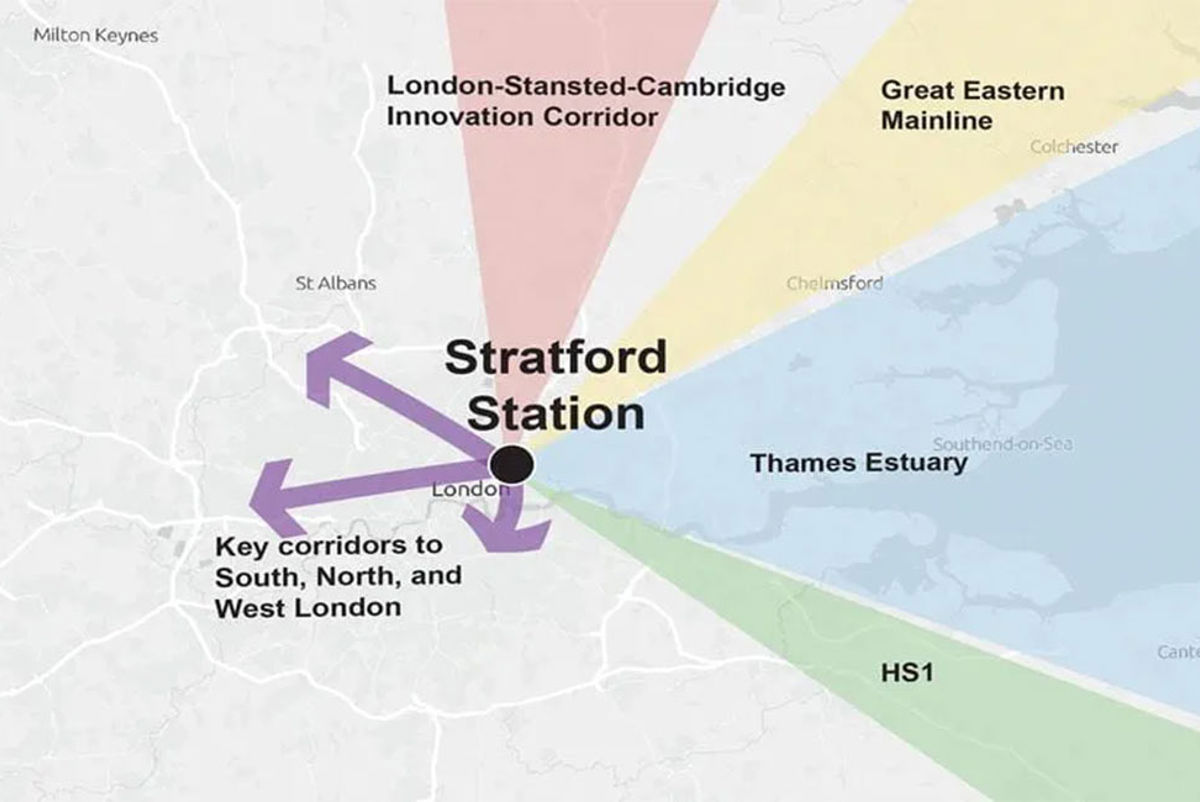How rail station upgrades can drive wider urban change
Rail stations have long been a mechanism for driving cities’ economic growth, opening new areas for development, and enabling wider social, economic, and environmental change. This concept falls under many different names – transit-oriented development, over-site development, transport-led regeneration.


Urban Planner
Andrew Nothstine
Director

Economic Development Specialist
Jack Stevens
Associate
The way in which people move around our towns and cities has always had a profound relationship with (and impact on) how land is used, valued, and developed.
The first rail networks in the 19th century and streetcar suburbs of the early 20th century enabled rapid urban expansion and catalysed growth in local and national economies – characterised for example by the ‘Metro-land’ expansion of Greater London in the 1920s.
For this reason, rail stations have long been a mechanism for driving cities’ economic growth, opening new areas for development, and enabling wider social, economic, and environmental change. From Copenhagen to Sydney, London to New York, Bradford to Leeds, major station upgrades are playing a pivotal role in catalysing the regeneration of urban districts such as King’s Cross, Hudson Yards, and Central Precinct.
This concept falls under many different names – transit-oriented development, over-site development, transport-led regeneration. Yet, however it’s branded, the underlying objective would be familiar to past generations of city-builders – making transport improvements with an eye towards how these will shape a community’s economic opportunities and quality of place.
Defining the regeneration question
There is broad agreement across policymakers, investors and developers in the theory of using station investments to drive wider regeneration and growth – but getting this right on the ground has proven deeply challenging for many places.
There are, of course, complex engineering, design, and operational questions that are unique to environments where transport infrastructure collides with the buildings and public spaces in which people work, study, shop, live, and play. We have played a key role for decades in helping sort through these challenges, including engineering and urban design solutions for over-site development at stations along London’s Crossrail line and at Sydney’s Martin Place.



But our clients are also confronting increasingly complex issues around the economic, financial, and delivery aspects of these projects, which often encompass thorny questions around funding and value capture, public-private-partnership models, land assembly, and effective governance and decision-making.
Stratford Station in east London is a great example of this challenge and opportunity. Ever since the London 2012 Olympics, the area has seen huge growth in residents, visitors, and businesses. It has become a cultural and economic magnet thanks to the Queen Elizabeth Olympic Park, Westfield shopping centre, emerging East Bank cluster of cultural and educational institutions, and the growth of surrounding neighbourhoods. Stratford Station is now the fifth busiest in the UK, serving interconnecting national, regional, and local rail lines and hosting the nation’s busiest bus interchange – all of which have grown organically across the decades.
Arup has a long relationship with the station, having worked on its redesign 25-years ago which supported a prior wave of growth across the community. Today, there is an urgent need to plan for the next major reimagining of the station and its environs.
The area’s success means the station is nearing capacity limits. Passenger movements have grown from 40 million in 2006 to 128 million in 2019, with a further 60% growth predicted by 2041. Alongside this, the surrounding communities are dynamic and fast-growing. The four boroughs surrounding Stratford have grown by well over 300,000 people since the turn of the millennium – equivalent to adding a city the size of Nottingham. This has huge advantages. Newham, for example, has seen the fastest mode shift to public transport in the country, reaching over 40% by 2019. But there are also acute challenges, with housing affordability foremost amongst these. Newham has more households living in poverty after housing costs and more overcrowded households than anywhere else in the country.
Our Urban Development and Mobility team has worked on major station-driven regeneration projects across the globe, including Stratford as well as Old Oak, Euston, Leeds, Sydney Central, Auckland and more. From this work we have identified three key ingredients for achieving successful outcomes:
-
Convene: A broad and enduring partnership – but led by a single ‘guiding mind’
-
Integrate: Create a compelling case for investment – but ensure that urban growth and transport outcomes remain integrated
-
Outside in: Think ‘beyond the red line’ to understand the station’s relationship with adjacent communities – but then think even further to understand the regional picture
Build the right coalition, led by a single ‘guiding mind’
The first step is to bring the right people together. Broad and enduring partnerships across an array of local and national public sector organisations and the private sector are critical to the success of these long-term, often multi-decade programmes.
Defining and aligning objectives among stakeholders is especially important. These then need to be deftly balanced as tough calls and competing priorities emerge over time. There can be tensions between the need to deliver affordable housing or community space and maximising the cash receipts to pay for the project. Striking the right balance between economic outcomes and financial returns is perhaps the most challenging, but also most important, aspect of these programmes.
Modelling and virtualisation have a role to play here – we often use these tools to explore how outcomes could be realised, and to bring stakeholders and the community into the design process, deepening commitment at all levels. Our ExperienceLab is an augmented reality environment where the proposed design can be brought to life, demonstrating the experience of being in the newly-created or improved place and visualising the beneficial impacts of a scheme. Another tool, our Dynamic City Model, offers a way of rapidly testing how transport upgrades can influence development patterns and stimulate new economic activity.
A coalition of partners is critical – but so is the need for an effective ‘guiding mind.’ This could be a single individual, or a single organisation with strong leadership and a clear mission – but in either case, this role ensures that there is a cohesive, long-term design vision for the place and that the economic and social benefits are not diluted over time.
An integrated case is stronger and more likely to stand the test of time
A default approach to these programmes is often to disaggregate the business case into discreet components aligned to individual funding and delivery partners – for instance, splitting out the transport elements to respond to the needs of transport sponsors, and the urban development components to align with the aims of regeneration or economic development authorities. This often results in suboptimal outcomes, or worse, the project not moving forward into delivery.
We have been pushing ourselves and our industry to find new and better ways of developing fully integrated business cases – as we have done with the London Legacy Development Corporation at Stratford. At Leeds Station, an integrated perspective has also allowed for a more effective approach to scheme optioneering, enable the selected design to optimise benefits and to design-out costs – leading to better value for money and funding approvals.
An integrated business case will better reflect and address the structural and operational interfaces between the station and development, of course, but also the financial, economic, and delivery interfaces.
Such an approach is more challenging from an analytical perspective – and more difficult to progress through governmental decision-making processes that still tend to be siloed. However, the benefits of such an approach more than outweigh these challenges, as we saw at Stratford where an integrated approach helped to deliver:
-
A stronger and more compelling story – one that was not just about a station or a development opportunity, but firmly rooted in Stratford as a place, with communities at its heart.
-
A broader economic appraisal – capturing the holistic benefits of a proposal rather than being narrowly wedded to particular categories of impact. At Stratford this was crucial for engaging analysts from across multiple government departments.
-
A creative funding approach –where we explored how new development and increased economic activity could help to fund necessary infrastructure improvements and also set out the organisational foundations that would need to be in place to deliver on this promise.
Start ‘outside-in’ – Looking far beyond the red line
Good planners already know we need to look beyond the boundaries of the station itself to understand and influence the impact that these assets can have on local communities. But what if we looked more widely – understanding the wider regional and national significance of these stations and places?
Stratford is the key focus for growth in East London, but also has a critical role at the nexus of multiple corridors stretching across southeast England: to East Anglia, Kent, and along the Thames Estuary. We used spatial and data analysis to understand this role, exploring the proportion of trips from a wider regional catchment that rely upon Stratford. Most importantly we measured the amount of new housing delivery that depends upon it functioning properly as an interchange.

Adopting this wider geographic lens helps to create a better scheme, one that responds to the needs of a much wider range of station users and other stakeholders. It results in a stronger articulation of the scheme’s economic benefits, helping to justify investment and broaden the coalition of supportive parties.
This then also leads to a wider view of potential funding solutions – if we are able to make the case about how station investment will enable growth elsewhere across the region, while also delivering on other national priorities, we open up potential new avenues for funding and delivery.
What next?
Major rail stations around the globe will continue to play a central role in urban development. Wider trends towards maximising public transport, consolidating economic activity and competing internationally will increase the focus on these crucial hubs of human activity even further. However, in an era of constrained public finances and increasingly complex urban challenges, it is more critical than ever for cities to ensure that these projects drive maximum social, economic and financial value. We know how challenging that can be – but the rewards are potentially transformative.
Get in touch with our team
Insights
Explore more rail insights
The rail and urban transport review: an assessment and ambition for a new government

Rail Resilience Framework

How does the rail industry find space to prioritise resilience planning and investment?

How High Speed 1 has influenced London's growth for the past 20 years

